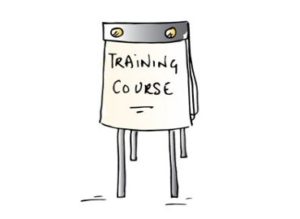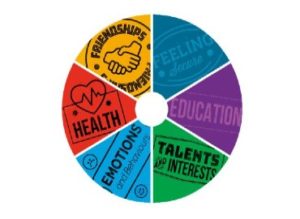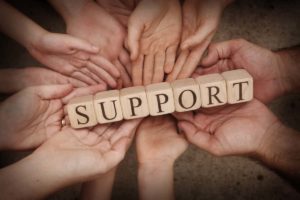HeadStart Kent 2019/20 year-end report: Reaching and engaging the target population
HeadStart Kent (HSK) continues to further expand the reach of the programme at all levels and to the intended target populations. The training and tools are increasingly being used by schools and organisations outside of the nine HSK areas.
A third of the 10 to 16-year-old population in Kent are benefitting from universal support provided through HSK. The characteristics of young people identified as requiring or taking up support were similar to previous years, with exceptions for some types of support.
For most interventions, the number of young people identified as requiring, taking up and completing support exceeded the estimated reach. However, the number of young people taking up and completing support from volunteer and intensive mentors was below what was estimated.
Reach for parents and carers is also below that estimated.
A three-level approach was adopted by HSK to achieve the programme ambitions. Each level has an intended target population and the reach of those benefitting was estimated at the beginning of Phase 3.
Level 1
Aim: Improved emotional wellbeing and resilience through activities which promote cultural change.
Approach: Kent-wide activity to promote an understanding of the factors impacting on a young person’s emotional and mental health wellbeing and the actions that can be taken to support them in building their resilience.
Target Population: School staff and practitioners (including refuge workers, EHPS and VCS supporting parents/young people). Public (including young people and families).
Level 2
Aim: Improved attendance and academic achievement to ensure young people in Kent are equipped to maximise their potential.
Approach: Universal Plus to support system change within discrete geographies based on
groupings of schools identified on the basis of need across Kent, providing a range of opportunities to achieve the three conditions by young people to be resilient.
Target Population: School staff. Local practitioners. Pupils aged 10 to 16 and their parents / carers.
Level 3
Aim: Improved emotional wellbeing and resilience of targeted young people; specifically, for those who have/are experiencing domestic abuse.
Approach: Additional: A targeted approach aligned to Tier 2 support focusing on the early identification of young people who, as a result of domestic abuse and trauma may benefit from additional early support to help retain and/or build their resilience and emotional wellbeing to prevent adverse outcomes.
Target Population: Young people receiving school or community ‘nudge’. Young people identified by concerned parents / carers. Young people aged 10 to 16 in refuges. Young people aged 10 to 16 in families with domestic abuse.
To evaluate the extent to which HSK has engaged with the intended target populations up to March 2020, data has been collated from a range of sources. This includes the programme’s internal reporting and the HSK schools and delivery partners. The characteristics of young people supported by HSK have been modelled using the 2018/19 Strategic Commissioning Analytics Children & Young Person’s Integrated Data Model.
Level 1 – Kent Wide
Resilience Hub and Moodspark
The Resilience Hub homepage had 31,154 hits. 44% of hits were to the ‘schools and community’ page. The page most frequently accessed was the ‘resilience toolkit’ with 6,080 hits.
 The young people’s website ‘Moodspark’ has been live since January 2020. Of the top-level pages, ‘emotions and behaviours’ has been accessed most frequently.
The young people’s website ‘Moodspark’ has been live since January 2020. Of the top-level pages, ‘emotions and behaviours’ has been accessed most frequently.
Although numbers were relatively low as the website is new, the most frequently accessed page was ‘I need help now’ (59 hits).
Marketing and communication
The HSK Twitter account had 1,481 followers. An increase of 12% compared to last year.
The social marketing campaign ‘Draw Your Own Solution’, delivered by Hitch Marketing, started on 16th March 2020 and ran for around four weeks.
Snapchat had the highest number of clicks, although the reach of the Instagram adverts also performed well. The content for girls performed slightly better than boys.
Resilience Toolkit and Quality Mark
All HSK secondary schools use the Resilience Toolkit as a resource to work towards achieving the Award for Resilience and Emotional Wellbeing.
89 schools (including HSK primary school) and community organisations have requested the Toolkit. 61% of those requests were from primary schools. 27% of requests were from organisations were outside of the districts where HSK operates.
27 schools achieved the standard to receive the Award for Resilience and Emotional Wellbeing.
Training
 In total, 5,025 school and community staff have taken up training, exceeding the estimated reach of 3,131.
In total, 5,025 school and community staff have taken up training, exceeding the estimated reach of 3,131.
1,945 staff have been trained by HSK staff in resilience conversations, trauma and mindfulness.
Of the training provided by the HSK delivery partners, Mindfulness Intensive and Youth Mental Health First Aid (YMHFA) exceeded the estimated reach. However, Building Resilience Train the Trainer reached much fewer than estimated.
Level 2 – Universal Plus
Schools and community organisations
The number of school and community organisations engaged in the programme continues to grow and exceed the estimated reach, particularity community organisations. 83% of schools and organisations were engaged through training, however 47% of private sector organisations were engaged by receiving Pay It Forward or Talents & Interests grant funding to support young people in their settings.
Young people benefitting universally
Young people in 32 secondary schools and 46 primary schools are benefitting from universal support, as well as those
participating in the programme that do not attend a universally benefitting school. 42,430 young people are benefitting, exceeding the estimated reach of 37,016. This equates to 32% of the 10 to 16- year-old population in Kent.
Young people requiring additional support
6,959 young people were identified as requiring additional support, exceeding the estimated reach of 1,505. This equates to 5% of the 10 to 16-year-old population in Kent. 61% were identified through a school resilience conversation, Domestic Abuse incident notification sent to the schools by HSK or a school welfare concern.
Young people’s characteristics overview
There were similarities in the characteristics of young people identified as requiring or taking up support at a Universal Plus level, which was also comparable to previous years.
Higher proportion from Swale (18% – 26%).
Majority from HSK schools (79% – 96%).
Majority from mainstream schools (53% – 83%).
Average age 14 years old.
Higher proportion females than males (52% – 67%).
3% – 10% have experienced domestic abuse.
7% – 8% were from ethnic minority backgrounds (9.6% aged 0 – 10 in Kent).
24% – 30% had Special Educational Needs and Disabilities (13.5% in Kent).
29% – 32% were eligible for Free School Meals (13.1% in Kent).
Higher proportion were classified in the Mosaic profile ‘Family Basics’ – families with limited resources who have to budget to make ends meet (23% – 32%).
Any exceptions to the above have been detailed for each type of support in the following sections. Where reach of the programme was at inception estimated for The National Lottery Community Fund, this is shown in the data tables and progress towards the estimates indicated in colour.
Resilience conversations
 The number of young people identified as requiring and having a resilience conversation exceeded the estimated reach.
The number of young people identified as requiring and having a resilience conversation exceeded the estimated reach.
Of those having a resilience conversation, 22% had a follow up conversation. The majority of resilience conversations took place in schools (59%).
Safe Spaces
The number of young people identified as requiring and accessing a safe space exceeded the estimated reach. Higher proportion identified as requiring from grammar schools (20%).
Peer Mentors trained
The number of young people trained as peer mentors exceeded the estimated reach. Higher proportion from special schools (40%) and ethnic minority backgrounds (14%). Lower proportion eligible for FSM (14%) and SEND (11%).
Peer Mentoring
The number of young people identified as requiring a peer mentor exceeded the estimated reach. The number taking up and completing is low due to the limited number of resilience conversation follow up conversations recorded.
Online support and counselling (Kooth)
The number of young people identified as requiring online support was slightly below the estimated reach. However, the number taking and completely exceeded the estimated reach. Higher proportion taking up from ethnic minority backgrounds (14%). Lower proportion of males taking up (24%).
One to one support with a HSK Participation worker
 313 young people have received one to one support from a HSK Participation worker. Higher proportion identified as requiring from Maidstone (31%), males (52%) and experienced domestic abuse (12%).
313 young people have received one to one support from a HSK Participation worker. Higher proportion identified as requiring from Maidstone (31%), males (52%) and experienced domestic abuse (12%).
Participation
2,321 young people have participated in HSK. 219 were current or previous SpeakOut members. 236 were current or previous Kent Youth County Council (KYCC) members.
Characteristic exceptions (Participation): Higher proportion from grammar schools (21%) and ethnic minority backgrounds (14%). Lower proportion eligible for FSM (16%) and SEND (14%).
Characteristic exceptions (SpeakOut): Higher proportion from Folkestone & Hythe (20%). Lower proportion SEND (19%).
Characteristic exceptions (KYCC): Older young people (average age 15). Higher proportion from non-HSK areas (25%), grammar schools (39%), ethnic minority backgrounds (18%) and in the Mosaic group ‘Domestic success’ (17%). Lower proportion from HSK schools (40%), eligible for FSM (13%) and SEND (15%).
Level 3 – Additional Support
Young people’s characteristics overview
Higher proportion from Swale (22% – 26%.
Majority from HSK schools (78% – 90%).
Majority from mainstream schools (55% – 81%).
Average age 14 years old.
Slightly higher proportion of females than males (50% – 60%).
7% – 9% have experienced domestic abuse.
7% – 10% were from ethnic minority backgrounds (9.6% aged 0 – 10 in Kent).
27% – 35% had Special Educational Needs and Disabilities (13.5% in Kent).
26% – 36% were eligible for Free School Meals (13.1% in Kent).
Higher proportion were classified in the Mosaic profile ‘Family Basics’ – families with limited resources who have to budget to make ends meet (25% – 36%).
Any exceptions to the above have been detailed for each type of support in the following sections. Where reach of the programme was at inception estimated for The National Lottery Community Fund, this is shown in the data tables and progress towards the estimates indicated in colour.
Volunteer mentoring (Young Lives Foundation and Porchlight)
The number of young people identified as requiring volunteer mentoring exceeded the estimated reach. However, the number taking up and completing in a planned way was below the estimated reach. Of the 439 taking up the support, 51% have completed.
Higher proportion taking up from Thanet (20%) and primary schools (21%). Lower proportion taking up from HSK schools (74%).
Intensive mentoring (Salus)
The number of young people identified as requiring intensive mentoring exceeded the estimated reach. However, the number taking up and completing in a planned way was below the estimated reach. Of the 530 taking up the support, 89% have completed.
Higher proportion taking up from grammar (20%) and primary schools (20%).
iCAN (Rising Sun, Oasis and Choices)
97 young people have received support from iCAN. Of those, 63% have completed the support.
Males taking up with an average age of 15. Higher proportion experienced domestic abuse (13%), from ethnic minority backgrounds (12%) and eligible for FSM (45%). Lower proportion from HSK schools (35%).
Talents and Interests
The number of young people identified as requiring, taking up and completing Talents & Interests exceeded the estimated reach.
Higher proportion taking up from Canterbury (19%) and from special schools (12%).
Systemic Family Individual Work (HSK Senior Early Help worker)
 119 young people have received support from the HSK Senior Early Help workers. Of those, 60% of those have completed the support.
119 young people have received support from the HSK Senior Early Help workers. Of those, 60% of those have completed the support.
Higher proportion taking up have experienced domestic abuse (14%).
Systemic Family Group Work (Salus Family Focus Transition)
915 young people have received transition support. Of those, 93% have completed the support.
Higher proportion from Ashford (17%) and males (59%). Lower proportion experienced domestic abuse (5%).
Sarah Collins – Sarah.Collins@kent.gov.uk
HeadStart Monitoring and Evaluation Officer
Strategic Commissioning – Analytics
July 2020
HeadStart Kent 2019/20 year-end report: Reaching and engaging the target population
-
HSK 201920 year end report - Reach
.pdf
688.08 KB
Download resource